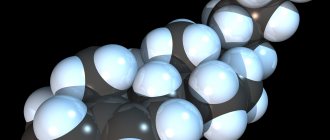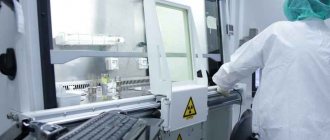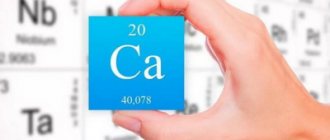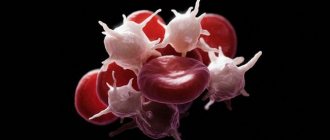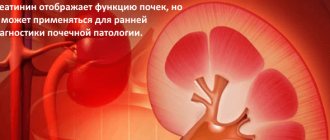Triglycerides: what are they?
Triglycerides are derivatives of the 3-hydric alcohol glycerol and higher fatty acids. They are components of vegetable oils. Triglycerides, like cholesterol, are energy generators for the full functioning of cells.
Once in the body with food, triglycerides acquire new forms: they become glycerol and fatty acids. In their transformed form, they are absorbed by the mucous membrane of the small intestine and transported to the organs.
The level of triglycerides in the blood varies constantly throughout the day. Their number increases several times half an hour after eating - this is weak chyle. Triglycerides return to the original amount only after 10 hours.
Triglycerides and fatty acids
Let's sum it up
Chylosis is a precedent that is much easier to prevent than to later eliminate its consequences, which affect the functionality of all central systems of the body, and, accordingly, the quality of human life. An attentive and respectful attitude towards your health, namely adherence to the principles of healthy life, the rules of a correct, balanced diet, and decent physical activity are the main preventive measures that can reduce the risk of developing many pathological conditions, including lipemia.
Why does blood chyle occur?
The causes of blood chylosis mainly lie in incorrect preparation for blood collection.
Eating heavy food or alcoholic beverages on the eve of the test contributes to the appearance of “fatty” blood. It is food that provokes an upward jump in the level of neutral fats in the blood.
Chylous serum is also formed due to metabolic problems. Chylosis is determined in diabetes mellitus and hypothyroidism.
Fat is detected in blood tests when:
- Diseases of the renal apparatus (renal failure, nephrosis),
- Liver pathologies (cirrhosis, viral damage),
- Hereditary disorders of fat metabolism,
- Malfunctions of the lymphatic system.
If a genetic factor is present, then they speak of pronounced chyle when the level of triglycerides in the blood is several tens of times higher.
A number of diseases can contribute to blood chyle:
- Pancreatitis (chronic and acute form),
- Down syndrome,
- Gout,
- Atherosclerosis,
- Anorexia (neurotic type),
- Angina pectoris
- Acute porphyria,
- Hemophilia,
- Vascular thrombosis,
- Hypercalcemia of unknown origin,
- Myocardial infarction.
How to treat chylosis
If chylosis is spontaneously detected, the doctor recommends donating blood again, following the rules before the test. First of all, do not eat fatty foods at least 12 hours before coming for the procedure. In a situation where lipemia is confirmed, further diagnostic measures are prescribed. Therapy is selected based on the results of hardware studies. Chylosis may be a hallmark of the following serious diseases:
- Gouty changes in the joints.
- Arthritis.
- Inflammation of the pancreas.
- Pathologies of the blood coagulation system.
- Atherosclerotic disease.
- Hereditary hyperlipidemia.
- Chronic stress.
- Chromosomal diseases, such as Down's disease.
Initially, it is recommended to follow a low-fat diet in the presence of blood chylosis. Try to remove fatty meats, sweet baked goods, white bread, and carbonated drinks from your diet. The main thing is that targeted therapy for the underlying disease, which is accompanied by chylosis, is selected.
Is treatment necessary for blood chylosis?
Like any deviation from the norm, chyle requires a qualified medical assessment. Treatment is prescribed after identifying the causes that influenced the occurrence of chylous blood.
For this condition, doctors prescribe:
- Medications,
- special diet
- Folk remedies.
Medicines are selected for each patient individually. Medications are used, the purpose of which is to normalize and improve the activity of the liver and metabolic processes.
How does lipemia interfere with testing?
Lipemia can interfere with blood tests in several ways:
- Increases light absorption. Because of this, the results of spectrophotometric analysis, which are used during biochemical blood tests, are distorted. The accuracy of studies that use light with a short wavelength suffers especially severely. The device determines the concentrations of some substances, for example, ALT, AST, bilirubin, incorrectly.
- Lipoproteins prevent antibodies from binding to antigens. As a result, the results of immunological tests are distorted. Depending on the nature of the reaction, they can turn out to be false positive and false negative.
- Distorts the results of studies in which the method of capillary electrophoresis of whey proteins is used. For example, it was noted that when analyzing blood with lipemia, the alpha-2-globulin fraction changes.
- Leads to heterogeneity of plasma and serum after centrifugation. In a centrifuge, VLDL, due to its low density, accumulates in the upper layer. Accordingly, there will be very few substances that are soluble in water. During analysis, their concentration will be incorrectly determined as low. At the same time, steroid hormones and some drugs accumulate in the upper lipid layer, and their concentration will be low in the lower part of the tube.
- Leads to the effect of volume displacement. Normal blood plasma consists of 92% water and 8% lipids. With lipemia, these figures can be 75% and 25%, respectively. But electrolytes are dissolved only in plasma, they are not in lipids. If the laboratory uses methods that determine the level of electrolytes in the total volume (indirect potentiometry, flame photometry), then their concentration will be lower than it actually is.
- With lipemia, hemolysis occurs more strongly - the destruction of red blood cells and the release of hemoglobin from them. This also interferes with the analysis and affects its accuracy. It is not entirely clear why lipids lead to this effect; it is believed that they act on the wall of red blood cells during the processing and centrifugation of blood as detergents (surfactants).
Treatment of chylosis with diet
A diet for chylosis is the first thing that patients with such test results need. It should reduce blood viscosity and improve its circulation. The list of foods that should be included in your diet, and which should be avoided, is presented in the table.
| Useful foods for chyle | Stop products |
| Fruits (lemon, orange, pomegranates) | Flour and sweet products (cakes, cakes, pies) |
| Tomatoes | Sausages |
| Linseed oil | Pickles |
| Berries (currants, viburnum, cranberries) | Fried food, sauces |
| Fish oil and seafood | Eggs |
| Nuts (walnuts, almonds, cashews) | Alcohol |
| Spinach, broccoli, greens | Fatty dairy products |
The use of hot seasonings remains prohibited: red pepper, wasabi, ginger, Tabasco, mustard.
For cooking, you can use less “hot” spices:
- Thyme,
- Oregano,
- Mint,
- Cinnamon.
To make the blood less thick, it is recommended to drink more fluid. This can be still mineral water or regular water, to which a small amount of lemon juice is added.
You are allowed to drink natural juices based on fruits and vegetables, green tea, and compotes.
Diagnostics
If the cause of chyle is inadequate preparation for the test, treatment is not carried out. Eating disorders on the eve of the study are one of the main factors that distort the results. All other cases require an individual approach. Therapists, as well as specialists in the field of endocrinology, cardiology, hematology, and arthrology, carry out therapeutic and diagnostic measures.
The choice of treatment tactics depends on the diagnostic results and the general condition of the patient. Specialists talk with the patient, examine him, and send him for laboratory tests. Lipidogram is a comprehensive study of lipid metabolism. It consists of a biochemical blood test for cholesterol, triglycerides, and lipoproteins of various classes. Clinicians, having received the results of the analysis, pay attention not just to the digital values of triglycerides, but also to all other indicators that confirm or refute possible health risks. A lipidogram is prescribed to persons suffering from hypertension, diabetes, alcohol and nicotine addiction. It is recommended to donate blood for testing to anyone who is overweight and leads a sedentary lifestyle. Diagnosis of triglyceride values for people over 20 years of age is carried out at least once every five years.
division of fats into fractions in a lipid profile
Does traditional medicine “work” for blood chylosis?
Traditional medicine recipes often help with increased blood viscosity, which is characteristic of chyle.
For this purpose, decoctions and tinctures from the following plants and berries are most often used:
- Currants,
- cranberries,
- Garlic,
- Raspberries,
- Sea buckthorn.
Simple and affordable recipes for blood chyle:
- A decoction of currant leaves. In addition to currant leaves (5-10 pieces), you will need honey (1 tsp), mint (5 sprigs), water (1 l). The plant ingredients are washed well under running water and placed in a thermos or kettle. The greens are poured with boiling water. The decoction is brewed for 2 hours, then honey can be added to it.
- Infusion of garlic and dill. Peeled garlic (1 clove), dill (1 bunch) are placed in a 0.5 liter jar and filled with vodka (0.5 liter). Infuse the liquid for 4 days in a cool, dark place. The contents are carefully filtered. The infusion is ready for use.
How do laboratories detect lipemia?
Lipemia can be seen with the naked eye. The blood of such patients appears cloudy. This method is not reliable. Lipemia can be noticed only if the concentration of triglycerides is very high: in the supernatant - more than 3.4 mmol/L, in whole blood - more than 11.3 mmol/L. This is very subjective; not every laboratory technician can examine the changes that are recorded using special tests.
Many laboratories test for triglyceride concentrations. This method makes it possible to indirectly judge the presence of lipemia and, in combination with determining the L-index (more about it below), judge its cause. But this study has two shortcomings:
- The content of triglycerides in different types of lipoproteins varies: for example, in VLDL it is about 50%, in chylomicrons – up to 85–90%.
- In most of these assays, triglyceride concentration is inferred from the oxidation of glycerol to dihydroxyacetone phosphate. The more triglycerides, the faster glycerol oxidizes. If there is a lot of glycerol in the sample, a false positive result will be obtained. Such cases are known in patients with certain genetic disorders, among lovers of beer that contains glycerin.
Currently, automatic determination of the L-index is most often used. The essence of the method is that a blood sample is diluted in saline or a special buffer solution and the absorption spectrum of light of a certain wavelength (300–700 nm) is measured. The more lipids in a sample, the more it absorbs light.
Automatic determination of the L-index is a fast, inexpensive and fairly accurate method for detecting lipemia. But it also has some disadvantages. You can get a false positive result when the blood plasma is cloudy due to the content of other substances, for example, paraprotein (an “incorrect” immunoglobulin protein that appears in the blood in some diseases), contrast dyes that are used during some medical procedures.
Test systems for automatically determining the L-index are produced by different manufacturers; there is no single standard, and this makes it difficult to interpret the analysis results. Thus, errors are also possible when using this method, although they are rare.
Tips for those who donate blood
A blood test will be reliable if you follow several rules before the test:
- You can’t eat (even a light breakfast is prohibited),
- It is prohibited to purchase or consume any type of alcoholic beverages,
- Take medications (birth control pills, diuretics).
If chylosis was detected for the first time during blood donation, then it can be assumed that non-compliance with the diet contributed to its appearance. Therefore, in order to achieve correct results during the study, it is recommended to follow all the doctor’s instructions in preparation for the procedure. If repeated blood donation also reveals chylosis, you should seek help from a therapist to determine the causes and solve the problem.
Consequences of lipemia
If chyle occurs once, it is considered harmless. The detection of chylous blood several times in a row indicates a severe pathology.
Failure to take the signs of dysmetabolic processes seriously can lead to occlusion of blood vessels, lymphadenitis, and breakdown of red blood cells. These disorders underlie deadly diseases. Persons with chylosis are susceptible to the development of atherosclerosis and its complications - strokes, heart attacks, thromboembolism. In the absence of timely and correct treatment, they develop nutritional obesity and the functioning of the endocrine glands is disrupted.
deposition of fats in the walls of blood vessels with a combination of chylosis and provoking factors, the development of atherosclerosis
In addition, chyle is not just a manifestation of various pathologies and dysfunction of internal organs. This deviation does not allow a full examination of the patient and a biochemical blood test. As soon as fats are detected in it, the study is stopped. Chylous serum is rejected, and the patient is offered to re-donate blood after treatment.
Mechanism of occurrence
Knowing what it is - blood chyle and how it occurs, you can prevent the formation of this disorder. Fats enter the body when certain foods are consumed. After this, under the influence of gastric juice during the digestion of food, their structure changes with the formation of fatty acids and glycerol.
When broken down, these substances enter the small intestine, where they combine and return to their original form. In this form, fats are part of the smallest structures that enter the bloodstream. Then they penetrate into various human organs and tissues, where there is a danger of their deposition or the formation of more complex compounds.





